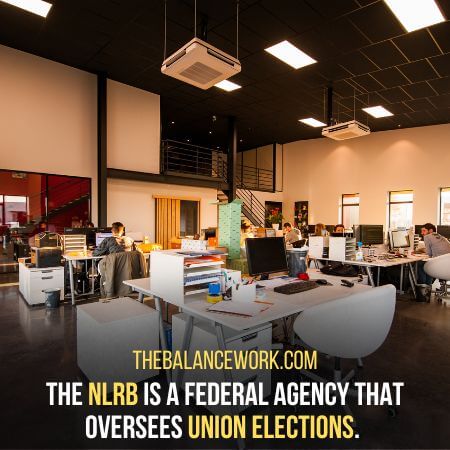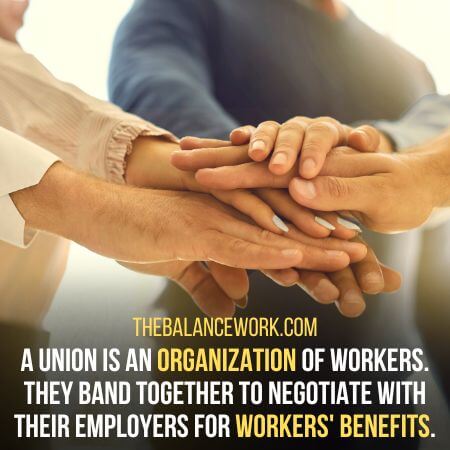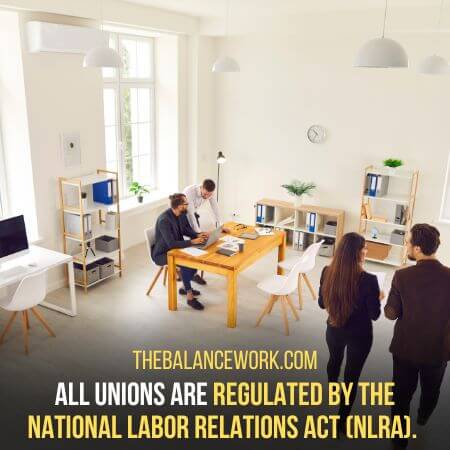Do you want to make unions in your workplace and make it more secure? Well, here’s a complete guide on how to unionize workplace.
Unions are important. They help protect workers from discrimination, unfair dismissal, and poor working conditions.
10 Steps To Unionize Your Workplace
In many cases, unions also help to negotiate better wages and salaries. Steps in the unionization process. If you’re thinking about unionizing your workplace, here’s what you need to do:
1. Educate:
Educate yourself and your co-workers about unions and their benefits.
Everyone must be on the same page. Everyone must understand what a union is, what it does and how it can help them.

When everyone is well-informed, it makes the unionization process much more manageable.
You can educate them by holding informational meetings, distributing pamphlets, or holding workshops.
Moreover, you can also contact a union organizer to come and speak to your co-workers.
2. Choose A Union Representative:
It would help if you chose a union representative. This person will be responsible for communicating with the union and your co-workers.
They will also be responsible for organizing meetings and negotiating with management.
Make sure to choose someone reliable and trustworthy. This person must also be able to communicate effectively.
3. Choose A Union:
Now it’s time to choose a union. There are many different types of unions, such as:
The most popular unions include the AFL-CIO, Change to Win, UFCW, SEIU, and Teamsters.
Do some research and choose the right union for you and your workplace.
Each union has its benefits, so make sure to compare them before deciding.
4. Build Support:
It will help if you build support for the union among your co-workers.
You can hold meetings, circulate petitions, or organize rallies. Or by committees, electing leaders, and making plans.
Make sure that you support at least 30% of your co-workers before moving on to the next step.
You need to collect the signatures of at least 30% of your co-workers.
This is necessary so that the union can apply for recognition from the company.
Unionizing will be very difficult if you have no support from your co-workers.
It is all about your workforce. Therefore, you should focus on building a support system from the bottom up.
Start with your immediate co-workers and then move on to others in your department or company.
5. File For A Union Election:
Once you’ve chosen a union, it’s time to file for an election with the National Labor Relations Board (NLRB).
The NLRB is a federal agency that oversees union elections. You can file for an election online or by mail.
You’ll need to provide the names and addresses of your employer. Also, the union and the employees who are eligible to vote.

You’ll also need to sign a petition that shows that you have the support of at least 30% of your co-workers.
Once the NLRB approves your petition, they’ll schedule an election.
6. Run A Campaign:
Once the election is scheduled, it’s time to start campaigning.
You and your co-workers will need to convince the rest of your co-workers to vote for the union.
You can do this by:
– Holding meetings
– Distributing leaflets
– Talking to people one-on-one, etc.
Make sure everyone is well-informed about the union and the benefits it can provide.
Do not forget to point out why you’re unionizing in your campaign.
7. Vote:
Once the campaign is over, it’s time to vote. On election day, your co-workers will vote on whether or not to unionize.
You and your co-workers will cast your ballots in a secret election.
If most employees vote in favor of the union, it will get the NLRB certification.
However, if the majority doesn’t vote in favor of the union, the union will not be authorized to form.
In this case, you can try again in the future or look into other options, such as filing a grievance or organizing a strike.
Sometimes, unionizing a workplace can be a long and challenging process.
8. Negotiate The Contract:
Once the union is certified, your employer will have to negotiate a contract with the union.
Schedule a meeting with your employer to start the negotiation process.
The contract will spell out things like:
– Wages
– Hours
– Benefits, etc.
All employees will elect a negotiating committee to represent you in the negotiations.
The committee will work with the union to come up with a contract that is fair for everyone.
9. Ratify The Contract:
After you’ve negotiated a contract, it needs ratification by the membership.

This means that your co-workers will vote on whether or not to accept the contract.
If they accept, then it becomes a legally binding document. If they reject, you’ll need to go back to the negotiating table.
You can do the ratification process through a secret ballot or a public vote.
It’s up to you and your co-workers to decide which method to use.
10. Enforce The Contract:
Once ratified, it’s time to enforce the contract.
This means making sure that management abides by the terms of the contract.
You can file a grievance or take them to court if they don’t.
Enforcing the contract is essential to protect your rights as a worker.
You deserve to fair treatment and respect. If you’re not, then speak up and take action.
Congratulations! You’ve successfully unionized your workplace. Now it’s time to sit back and enjoy the fruits of your labor.
Now let’s get to the primary education about unions.
What Are Unions?
A union is an organization of workers. They band together to negotiate with their employers for workers’ benefits.
There are different types of unions. For example, there are unions for teachers, nurses, construction workers, etc.
All of these unions have different goals, but they all fight for the same thing:
“to protect workers’ rights and improve their working conditions.”
History Of Unions:
Unions started in the United States in the 1800s. At that time, most workers were very poorly treated.
They worked long hours for little pay. Moreover, they had no voice in the workplace.

As a result, workers began to organize. They formed unions and went on strike to protest their working conditions.
Eventually, their hard work paid off. Thanks to the unions, workers began to earn better wages and have more rights in the workplace.
What Are The Types Of Unions?
There are two types of unions: private-sector unions and public-sector unions.
Private Sector Unions:
Private sector unions represent workers in the private sector. This includes industries such as:
– Manufacturing
– Construction
– Healthcare
– Retail
Public Sector Unions:
Public sector unions represent workers in the public sector. This includes industries such as:
– Education
– Law enforcement
– Firefighters
– Government workers

All unions are regulated by the National Labor Relations Act (NLRA). These unions are governed by the National Labor Relations Board (NLRB).
Some famous unions in the United States are:
1. AFL-CIO:
The AFL-CIO is the largest federation of unions in the United States. It represents more than 12 million workers in over 5600 unions.
AFL-CIO was founded in 1955. It has headquarters in Washington, D.C.
The leading figures behind this organization are:
– Richard Trumka (President)
– Liz Shuler (Secretary-Treasurer).
AFL-CIO has many goals, but its primary goal is to improve the lives of working people.
2. National Education Association (NEA):
The NEA is the largest professional employee organization in the United States. It represents more than 3 million workers.
NEA came into existence in 1857. It has headquarters in Washington, D.C.
Its President is Lily Eskelsen García, and its Executive Director is John Stocks.
3. Service Employees International Union (SEIU):
The SEIU represents over 2 million workers in the healthcare, public, and property service industries.
SEIU was founded in 1921. It has headquarters in Washington, D.C.
The current President of SEIU is Mary Kay Henry. Its Executive Vice President is Scott Courtney.
4. American Federation of State, County and Municipal Employees (AFSCME):
The AFSCME represents over 1.6 million workers in the public service industry.
AFSCME was founded in 1932. It has headquarters in Washington, D.C.
The current President of AFSCME is Lee Saunders. Its Executive Director is Gerald W. McEntee.
5. United Food and Commercial Workers Union (UFCW):
UFCW represents over 1.3 million workers in the food, retail and commercial industries.
UFCW was founded in 1979. It has headquarters in Washington, D.C. The current President of UFCW is Joe Hansen.
6. International Brotherhood of Teamsters (IBT):
IBT represents over 1.4 million workers in the transportation and warehousing industry in the United States and Canada.
IBT was founded in 1903. It has headquarters in Washington, D.C.
The current President of IBT is James P. Hoffa. Its General Secretary-Treasurer is Ken Hall.
All these unions have different goals, but they all fight for workers’ rights.
Why To Unionize Your Workplace?
There are many benefits of unions. For example, unions help to:
1. Keep Workers Safe:
Unions fight for better safety regulations in the workplace. They also make sure that employers follow these regulations.
As a result, unions help keep workers safe from accidents and injuries.
Likewise, unions also provide training for workers on how to stay safe in the workplace.
2. Improve Working Conditions:
Unions also fight for better working conditions. For example, they may negotiate for shorter work hours, more breaks, and better pay.

Moreover, unions help protect workers from getting mistreatment or harassment.
Similarly, unions may also negotiate better benefits, such as healthcare and retirement plans.
3. Increase Wages And Benefits:
Unions negotiate for better wages and benefits for their members.
For example, they may fight for higher salaries, paid vacations, and health insurance.
This helps to improve the quality of life for workers and their families.
4. Provide Job Security:
Unions help to protect workers from getting fired without cause.
If an employer tries to fire a worker for no reason, the union can step in and fight for the worker’s job.
This helps to provide job security for workers.
5. Provide A Voice For Workers:
Unions provide a voice for workers. They give employees a say in the decisions that affect them.
For example:
Unions may negotiate with management over changes in the workplace. Such as new technologies or work hours.
Likewise, unions may also lobby for laws that help workers. Such as minimum wage laws or anti-discrimination laws.
6. Strengthen The Middle Class:
Unions help to strengthen the middle class. This is because unions help to increase wages and benefits for workers.
As a result, workers have more money to spend on housing, food, and clothes.
This helps to boost the economy and create jobs.
7. Protect Workers’ Rights:
Unions also help to protect workers’ rights.
For example:
They make sure that employers follow labor laws and treat their employees fairly.
Likewise, unions may also file lawsuits on behalf of mistreated workers.
8. Offer Training And Education:
Unions offer training and education to their members. For example, they may offer classes on job safety or how to negotiate a raise.

Unions may provide financial help for workers who want to further their education.
9. Create A More Diverse Workplace:
Unions help to create a more diverse workplace. This is because unions represent workers of all races, genders, and ages.
As a result, unions help make the workplace more inclusive for everyone. Thus, making it a better place to work.
10. Help The Community:
Unions also help the community. For example, unions may donate money to local charities or food banks.
Likewise, unions may sponsor community events, such as parades or concerts.
This helps to make the community a better place to live.
Conclusion:
To unionize a workplace, employees must first come together and elect leaders.
Then, they must negotiate with management over wages, hours, and working conditions.
If an agreement is not reached, the employees may strike or file a lawsuit.
Unions provide many benefits to workers, such as better wages and job security.
They also help protect workers’ rights and create a more diverse workplace.
Unions are an essential part of the workforce and the economy.
- Why Does My Boss Wink At Me? 6 Potential Reasons - October 5, 2023
- Is It Legal For Your Employer To Call Your Doctor? No, But… - October 4, 2023
- 12 Ways To Deal With A Low IQ Person - September 22, 2023